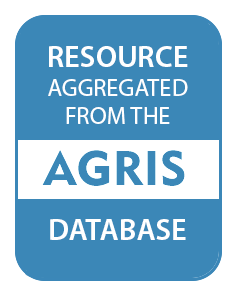What is AGRIS?
AGRIS (International System for Agricultural Science and Technology) is a global public database providing access to bibliographic information on agricultural science and technology. The database is maintained by CIARD, and its content is provided by participating institutions from all around the globe that form the network of AGRIS centers (find out more here). One of the main objectives of AGRIS is to improve the access and exchange of information serving the information-related needs of developed and developing countries on a partnership basis.
AGRIS contains over 8 million bibliographic references on agricultural research and technology & links to related data resources on the Web, like DBPedia, World Bank, Nature, FAO Fisheries and FAO Country profiles.
More specifically
AGRIS is at the same time:
A collaborative network of more than 150 institutions from 65 countries, maintained by FAO of the UN, promoting free access to agricultural information.
A multilingual bibliographic database for agricultural science, fuelled by the AGRIS network, containing records largely enhanced with AGROVOC, FAO’s multilingual thesaurus covering all areas of interest to FAO, including food, nutrition, agriculture, fisheries, forestry, environment etc.
A mash-up Web application that links the AGRIS knowledge to related Web resources using the Linked Open Data methodology to provide as much information as possible about a topic within the agricultural domain.
Opening up & enriching information on agricultural research
AGRIS’ mission is to improve the accessibility of agricultural information available on the Web by:
- Maintaining and enhancing AGRIS, a bibliographic repository for repositories related to agricultural research.
- Promoting the exchange of common standards and methodologies for bibliographic information.
- Enriching the AGRIS knowledge by linking it to other relevant resources on the Web.
AGRIS is also part of the CIARD initiative, in which CGIAR, GFAR and FAO collaborate in order to create a community for efficient knowledge sharing in agricultural research and development.
AGRIS covers the wide range of subjects related to agriculture, including forestry, animal husbandry, aquatic sciences and fisheries, human nutrition, and extension. Its content includes unique grey literature such as unpublished scientific and technical reports, theses, conference papers, government publications, and more. A growing number (around 20%) of bibliographical records have a corresponding full text document on the Web which can easily be retrieved by Google.
Members:
Resources
Displaying 1011 - 1015 of 9579Complex of actions for creation of economic prerequisites for activization of a turn of agricultural grounds
The condition of the market for of lands of agricultural purpose in modern Russia is analyzed and the complex of actions for economic prerequisites creation for activization of farm land rotation is offered. The state has to undertake urgently measures to increase the control not only over intended use of lands and their involvement in an agricultural rotation, but also over agriculture rationality. The international experience shows the active usage of land resources as pledge. Removal of obstacles of pledge transactions development is also needed in Russia.
effect of landscape structure on two species of different trophic levels in an arid environment
CONTEXT: Insect species of different trophic level will respond differently to landscape configuration. OBJECTIVE: In this context we explore the way landscape structure affects the distribution and abundance of the whitefly Siphoninus phillyreae and its predator Clitostethus arcuatus in olive orchards. METHODS: Adult individuals of these two species were collected using sticky traps placed in 12 olive host patches in Argentina. Host patches were detected and quantified using Landsat 5 TM images. Different landscape metrics were estimated for the study area land covers.
Hydrosalinity and environmental land degradation assessment of the East Nile Delta region, Egypt
Environmental land degradation is a major impediment to the utilization of land in many arid and semi-arid regions of the World and is a major issue in the East Nile Delta (END), Egypt. Waterlogging and salt-affected soil problems have serious implications for irrigated areas leading to socio-economic and agricultural development problems.
Long-term impacts of season of grazing on soil carbon sequestration and selected soil properties in the arid Eastern Cape, South Africa
BACKGROUND AND AIMS: The Karoo biomes of South Africa are major feed resources for livestock farming, yet soil nutrient depletion and degradation is a major problem. The objective of this study was to assess impacts of long-term (>75 years) grazing during spring (SPG), summer (SUG), winter (WG) and exclosure (non-grazed control) treatments on soil nutrients, penetration resistance and infiltration tests.
Combining the effects of surrounding land-use and propagule pressure to predict the distribution of an invasive plant
The distribution of invasive plants across a landscape is largely governed by disturbance invoking anthropogenic land-use practices and propagule pressure. However, spatial variability associated with anthropogenic disturbances and propagule pressure is seldom used to develop distribution models of invasive plants. This study makes use of large-scale survey data to develop a spatially explicit predictive model for the invasive wetland plant—purple loosestrife.


